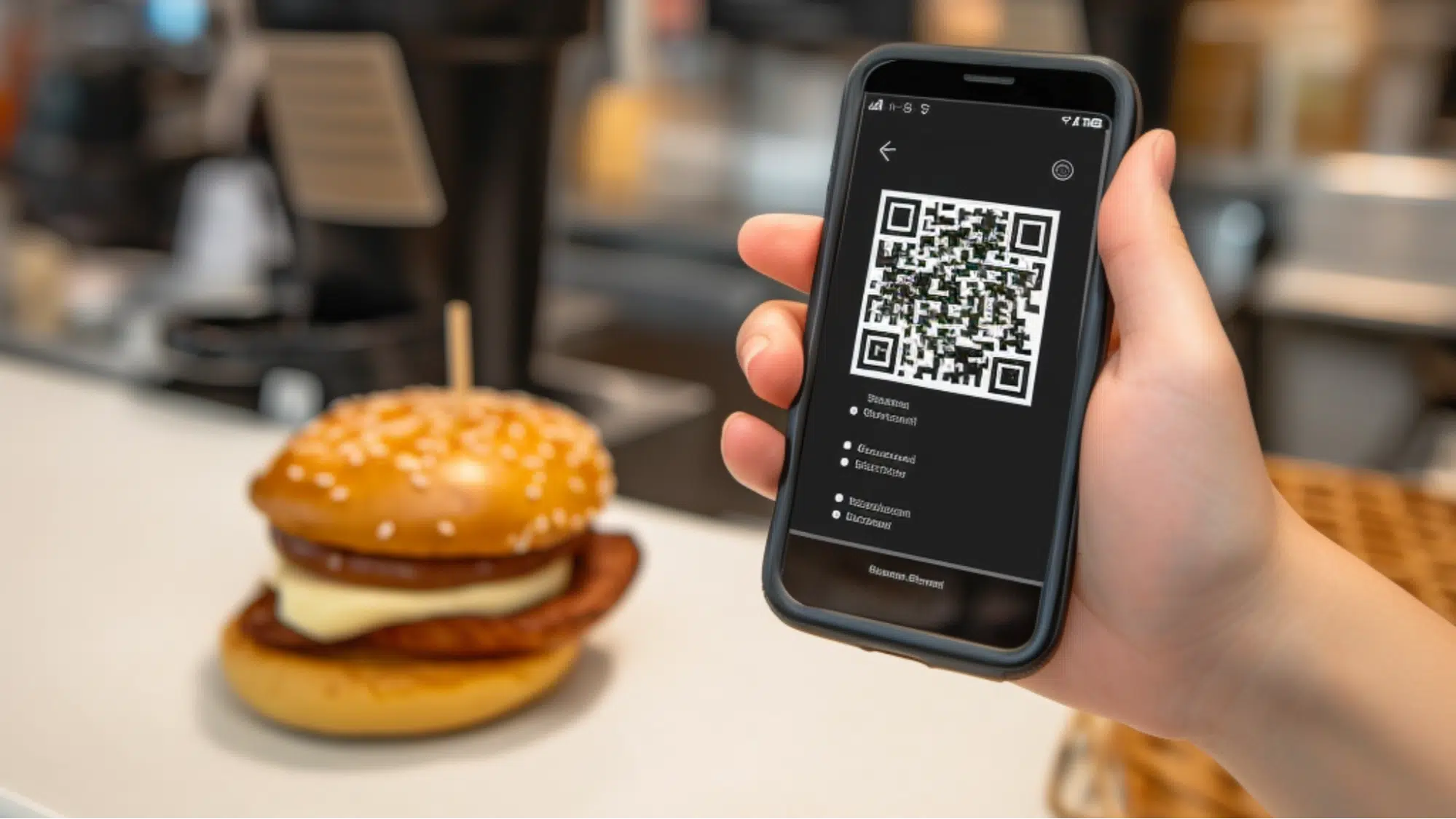In the modern restaurant landscape, quick service restaurants (QSRs) need to provide fast and efficient service to keep up with the demands of their customers. That’s where POS (point of sale) systems come in. POS systems are essential for QSRs because they enable restaurants to streamline their operations, manage their resources more efficiently, and provide a better customer experience.
The history of POS systems can be traced back to the early 1970s, when IBM first introduced a computerized cash register. This early technology could only process basic transactions, but it paved the way for more advanced systems that would eventually become the norm in the restaurant industry. Over time, POS systems have evolved to become faster, more reliable, and more feature-rich.
In the most basic terms, a POS system is a tool that allows restaurants to manage their transactions, inventory, and customer data in one centralized system. These systems can be made up of various hardware components, such as cash drawers, card readers, and POS terminals, as well as software that provides functionality for tasks such as inventory tracking, employee management, and sales reporting.
In the next section, we’ll dive deeper into the specific benefits that POS systems can offer for quick service restaurants.
Benefits of POS Systems in Quick Service Restaurants
POS systems offer several benefits to quick service restaurants. These benefits range from streamlining operations to improving customer experience, enhancing employee management, and providing sales reports and analytics. Let’s take a closer look at each of these benefits:
- Streamline Operations and Increase Efficiency
POS systems allow QSRs to process orders quickly and accurately. This helps to reduce wait times and increase customer satisfaction. With the ability to handle multiple orders simultaneously, POS systems allow employees to focus on other tasks, such as food preparation and customer service.
- Improve Customer Experience
POS systems enable QSRs to provide a more personalized and efficient experience for their customers. By offering mobile app ordering, self-ordering kiosks, and restaurant analytics, restaurants can cater to their customers’ needs and preferences. For instance, customers can easily customize their orders and pay with their preferred method of payment, including Google Pay, Apple Pay, or credit card.
- Enhance Employee Management and Time and Attendance Tracking:
POS systems help QSRs to manage their employees more effectively. They can track employee hours, break times, and time off requests, which helps to ensure that employees are compensated accurately. Additionally, POS systems can also provide insights into employee performance, allowing managers to identify areas for improvement and provide targeted training and support.
- Inventory Management and Tracking
POS systems help QSRs to track their inventory in real-time. They can monitor stock levels, set alerts for low stock, and automate ordering processes. This helps to reduce waste and ensure that popular items are always in stock.
- Sales Reports and Analytics
POS systems generate detailed sales reports and analytics, providing insight into sales trends, peak hours, and customer behavior. This information can help QSRs to make informed decisions about pricing, promotions, and menu items.
- Easy Integration with Other Systems
POS systems can easily integrate with other systems, such as accounting software, inventory tracking, and customer relationship management software. This helps QSRs to manage their operations more efficiently and effectively.
- Loyalty Programs
POS systems can also offer loyalty programs, allowing QSRs to reward their loyal customers with special discounts and promotions. This can help to increase customer retention and drive repeat business.
Different Types of POS Systems for Quick Service Restaurants
Quick service restaurants have a variety of POS system options to choose from. Let’s take a closer look at each type of POS system and their unique features:
- Traditional POS Systems
Traditional POS systems are fixed, hardware-based systems that are typically used at a stationary point in the restaurant, such as a checkout counter. They feature hardware components such as cash drawers, card readers, and touch screen terminals. These systems are reliable and can handle high transaction volumes.
- Mobile POS Systems
Mobile POS systems are software-based systems that can run on mobile devices, such as smartphones and tablets. These systems offer a high degree of flexibility and mobility, allowing staff to take orders and process payments from anywhere in the restaurant. These systems are especially useful for fast casual and food truck establishments.
- Self-Ordering Kiosks
Self-ordering kiosks are user-friendly, interactive touch screens that allow customers to place their own orders. These systems can improve customer experience by reducing wait times, streamlining the ordering process, and reducing order errors. These kiosks are especially popular in fast food and quick service establishments.
- Cloudbased POS Systems
Cloudbased POS systems are software-based systems that run on remote servers, rather than on local hardware. These systems offer easy accessibility and scalability, making them a popular choice for multi-location restaurant chains. These systems are also useful for providing real-time data analytics and reporting.
- Handheld Devices
Handheld devices, such as tablets or smartphones, can function as POS systems in QSRs. These devices can be used to take orders, process payments, and manage inventory, all while providing mobility and flexibility for staff.
Features to Consider When Choosing a POS System for Your Restaurant
Choosing the right POS system for your quick service restaurant is an important decision that can impact your business operations and customer experience. Here are some key features to consider when selecting a POS system for your restaurant:
- Payment Processing – Your POS system should be able to process a variety of payment methods, including credit cards, Google Pay, and Apple Pay. Additionally, your system should be secure and compliant with the latest security standards to protect both your business and your customers.
- Inventory Management – Your POS system should allow you to manage your inventory in real-time, track stock levels, and set alerts for low stock items. This will help you to avoid stockouts and ensure that popular items are always in stock.
- Menu Management – Your POS system should offer menu management tools that enable you to easily add, remove, or update menu items. This will help you to stay current with the latest trends and offerings, and ensure that your menu is always up-to-date.
- Kitchen Display Systems – Kitchen display systems (KDS) allow your kitchen staff to view and manage orders as they come in. This helps to reduce errors and improve order accuracy, while also providing insight into kitchen performance.
- Accounting Software – Your POS system should integrate with your accounting software to help you manage your finances more effectively. This will enable you to track expenses, generate financial reports, and stay compliant with tax laws.
- Customer Relationship Management – Your POS system should include customer relationship management (CRM) features, such as loyalty programs and customer data management tools. These features can help you to build customer loyalty, generate repeat business, and provide a better customer experience.
- Employee Management – Your POS system should offer employee management features, such as time and attendance tracking, employee performance monitoring, and scheduling tools. These features can help you to manage your staff more effectively, reduce labor costs, and improve overall operations.
How Different Types of Restaurants Use POS Systems
Implementing a POS system can have a significant impact on the efficiency and profitability of quick service restaurants. Here are three case of different restaurant types that have implemented POS systems to improve their operations:
Restaurant Type 1
A fast-casual restaurant chain implemented a POS system that included mobile ordering and payment processing. This allowed customers to order and pay for their food from their mobile devices, reducing wait times and increasing customer satisfaction. The system also included inventory tracking and management tools, which helped the restaurant to reduce waste and optimize their food costs.
Restaurant Type 2
An ice cream shop implemented a POS system that included a self-ordering kiosk and loyalty program. Customers were able to place their orders and pay at the kiosk, reducing lines and wait times during peak hours. The loyalty program incentivized repeat business and increased customer retention. The system also included features for inventory tracking and management, allowing the shop to optimize their ordering and reduce waste.
Restaurant Type 3
A food truck implemented a POS system that included a mobile app and credit card readers. The mobile app allowed customers to view the menu and place orders ahead of time, reducing wait times and improving the overall customer experience. The credit card readers allowed the food truck to accept a variety of payment methods, including Google Pay and Apple Pay, and the system included features for tracking sales and generating reports.
Future Trends in POS Systems for Quick Service Restaurants
As the restaurant industry continues to evolve, so do the needs and expectations of customers. To stay competitive, quick service restaurants must embrace new technologies and trends in the industry. Here are five future trends in POS systems that will shape the restaurant industry in the coming years:
- Mobile App Integration – Mobile app integration will become increasingly important for quick service restaurants. Customers want to be able to view menus, place orders, and pay from their mobile devices. POS systems will need to integrate with mobile apps to provide a seamless and convenient experience for customers.
- Digital Menus – Digital menus will become more prevalent in quick service restaurants, replacing traditional paper menus. Digital menus are easier to update, allow for customization and personalization, and can provide additional information about menu items, such as allergen and nutritional information.
- Real-Time Data Tracking – Real-time data tracking will allow restaurant owners and managers to make informed decisions based on up-to-date information. POS systems will need to provide real-time data on sales, inventory, and employee performance to help restaurant owners optimize their operations.
- Social Media Integration – Social media is an important marketing tool for quick service restaurants. POS systems will need to integrate with social media platforms to allow customers to share their experiences and leave reviews. This will help restaurants to increase their online presence and engage with customers.
- Acceptance of Various Payment Methods – As payment technologies continue to evolve, quick service restaurants will need to accept a variety of payment methods, such as Google Pay and Apple Pay. POS systems will need to integrate with these payment methods to provide a seamless and secure payment experience for customers.
Conclusion
As we’ve seen throughout this article, POS systems are essential for quick service restaurants looking to streamline their operations, enhance their customer experience, and increase their overall efficiency. From traditional POS systems to mobile and cloudbased options, there are numerous types of systems available that offer a range of features to consider, such as payment processing, inventory management, menu management, and more.
If you’re a restaurant owner or manager looking to take your business to the next level, it’s crucial to consider implementing a POS system. By doing so, you’ll be able to optimize your operations, increase sales, and improve the overall customer experience. So don’t wait – explore the various options available and find the right POS system for your restaurant today.






